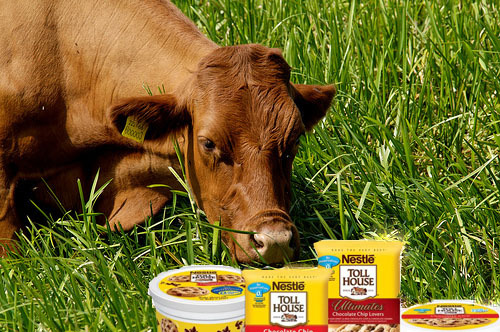
The recent discovery of E. coli O157 bacteria in NestlÈ refrigerated cookie dough and subsequent recall of 30,000 tubs of said dough raises an urgent scientific question: Uh, how did that much cow poop end up in cookie dough?
After all, E. coli is a bacterium normally found in cow intestines. That’s why contamination cases generally occur either in beef products, or fruits and vegetables fertilized with manure (or otherwise cross-contaminated.) So how did it get there? NestlÈ doesn’t know. Neither do the FDA or the CDC.
Health officials still do not know how E. coli 0157, a bacterium that lives in cattle intestines, ended up in a product that seems so unlikely to contain it. The risk usually associated with cookie dough is salmonella, a bacterium that can be found in raw eggs. None of the ingredients in the dough — eggs, milk, flour, chocolate, butter — is known to host E. coli 0157.
Federal investigators spent more than a week at the Danville plant and did not detect contamination in the equipment or among workers, Acheson said. “It raises the likelihood that it was an ingredient,” he said. “And it really means that industry has to be constantly vigilant, because foods we think of as low risk could be contaminated with a deadly pathogen.”
So be sure to eye your flour, butter, sugar, eggs, and chocolate chips suspiciously until this situation is resolved.
Incidentally, this paragraph in the Post story caught our eye:
Nearly all the victims, most of whom are female and younger than 19, reported eating raw cookie dough in the days before the onset of symptoms.
Because the ladies love raw cookie dough! Reports did not indicate whether any of the victims had recently been through a rough breakup, but we can infer.
In all seriousness, some of the victims are now severely ill, and we wish them a full recovery and for authorities to figure out what caused this.
E. Coli Confirmed In NestlÈ Samples [Washington Post]
Cookie dough at NestlÈ plant tests positive for E. coli [Consumer Reports]
(Photos: pyntofmyld)

